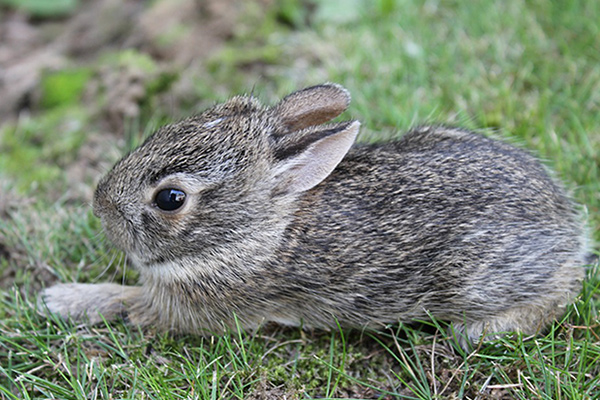As The Bell Tolls Midnight…
The clock just struck midnight and as you are making your rounds to make sure everyone is tucked in before you turn in for the night, you notice that Benjamin Bunny doesn’t come running over for his nighttime treat. Upon further inspection, you realize he isn’t feeling well, but you don’t know what to do. Your exotics veterinarian has long since gone home for the evening. There are a couple of animal emergency clinics near you, but when you call them asking for help, you are told they don’t see rabbits.
This is a scenario I have heard many times over the years. Some people who have tracked me down and called me in the middle of the night (I’m a night owl), do end up at my house, and sometimes I can help stabilize their bunny until they get him to the vet the next day. But what if you have no one to turn to?
4 Simple Things that May Make the Difference Between Life and Death
Ask your exotics veterinarian to teach you how to take your bunny’s temperature. Normal temperature for a rabbit is 102°F (101°-103°F is probably OK). Checking body temperature is where I start when I have a bunny not feeling well, especially if the bunny doesn’t want to eat. If the temperature is below 101°, you will want to get him on a heating pad on LOW. I usually put the heating pad in a dog bed covered with a towel and then set the bunny in the bed. I stay with the bunny and re-check his temperature after 15-20 minutes. If gas is causing him to go hypothermic, just getting him warmed up can stop a downward spiral that could claim the life of the bunny.
Keep plenty of infant simethicone (anti-gas liquid) ready for use. Since the gastrointestinal tract of a rabbit is the “shock absorber” for about everything, the slightest stress can cause a slowdown in digestion. Gas can build up quickly, and before you know it, your bunny has a full-blown stasis. A safe dose to start with is 0.6ml, which can be given 4-5 times a day (or night). This may ease some of the pain associated with a GIT slowdown.
If your bunny has a temperature higher than 103° you’ll need to wipe his ears down with a cool, wet washcloth. As the blood flows through the ears of a rabbit, it is cooled. Wetting his ears down will help this process.
I also keep a stethoscope on hand so I can listen for gurgles in the digestive system. If you don’t hear anything (when a bunny is sick and the GIT slows, sometimes it is difficult to hear gurgles and they may be infrequent, so plan to listen for several minutes) you may want to start some gentle tummy massage. If you hear loud, frequent gurgles and your bunny’s abdomen feels distended, you may want to start some gentle tummy massaging. Distention and many loud gurgles usually indicate the presence of a lot of gas. Massaging helps break up the gas bubbles and encourages the gas to exit the bunny.
Because so many health issues that come on quickly involve either hypothermia or hyperthermia, these tips may help your bunny feel better until the next morning when you can call your exotics veterinarian. Often the fluctuation of the rabbit’s temperature isn’t the cause of the problem, but rather a secondary reaction to something else, of which you may be unaware. If your bunny still doesn’t want to eat, be sure to let the staff know it is critical that your rabbit be seen. Be prepared to spend some money for radiographs and possibly blood work if suggested by your veterinarian. These tools are essential to help your veterinarian diagnose and help your bunny to make a full recovery.
 MOHRS
MOHRS